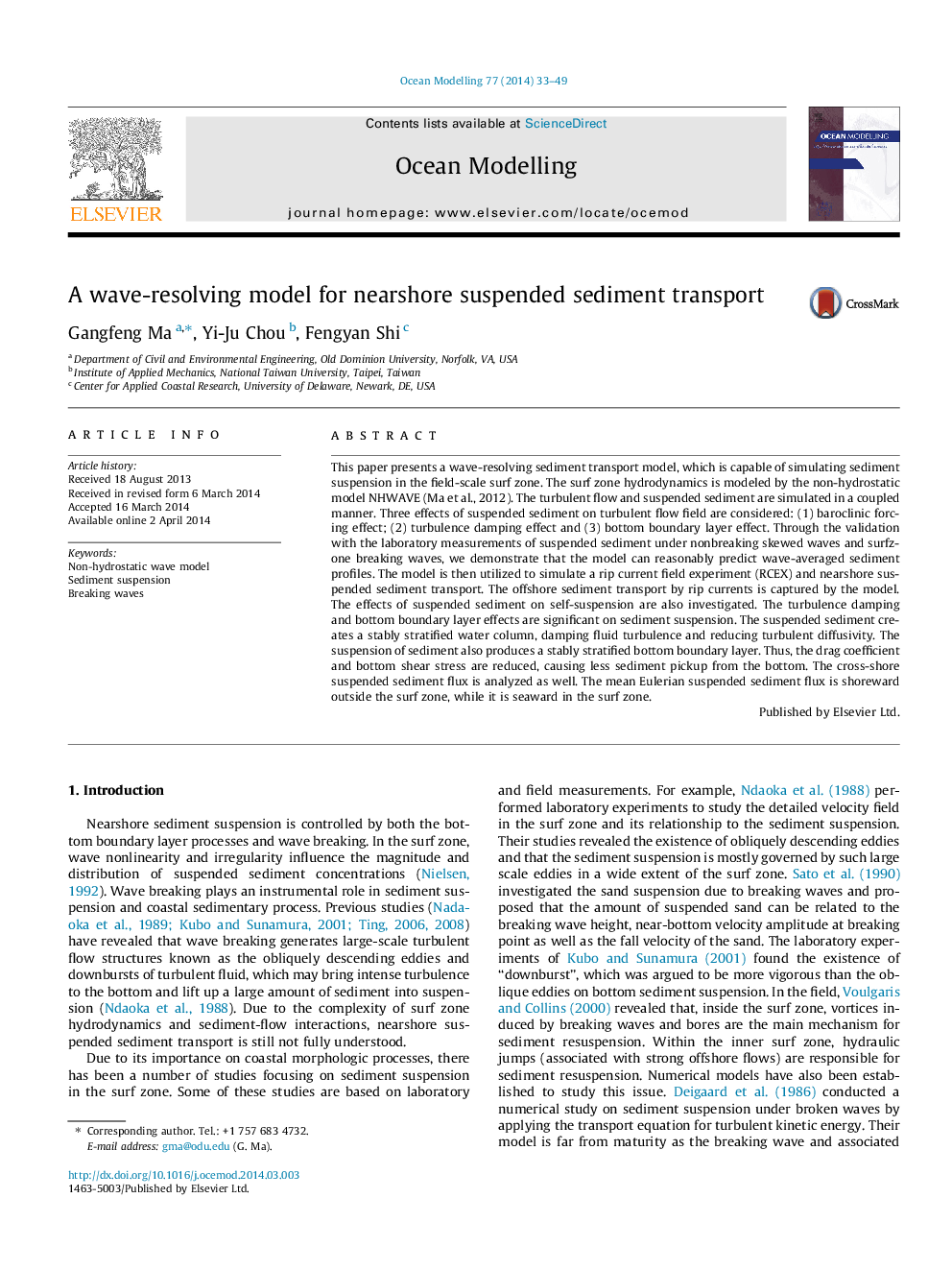| Article ID | Journal | Published Year | Pages | File Type |
|---|---|---|---|---|
| 4552056 | Ocean Modelling | 2014 | 17 Pages |
•A field-scale wave-resolving nearshore suspended sediment model is developed.•The model can predict sediment suspension under shoaling and breaking waves.•The model can reasonably simulate nearshore circulations and their effects on sediment transport.•The effects of suspended sediment on turbulence and self-suspension are examined.•The cross-shore suspended sediment fluxes inside and outside surf zone are analyzed.
This paper presents a wave-resolving sediment transport model, which is capable of simulating sediment suspension in the field-scale surf zone. The surf zone hydrodynamics is modeled by the non-hydrostatic model NHWAVE (Ma et al., 2012). The turbulent flow and suspended sediment are simulated in a coupled manner. Three effects of suspended sediment on turbulent flow field are considered: (1) baroclinic forcing effect; (2) turbulence damping effect and (3) bottom boundary layer effect. Through the validation with the laboratory measurements of suspended sediment under nonbreaking skewed waves and surfzone breaking waves, we demonstrate that the model can reasonably predict wave-averaged sediment profiles. The model is then utilized to simulate a rip current field experiment (RCEX) and nearshore suspended sediment transport. The offshore sediment transport by rip currents is captured by the model. The effects of suspended sediment on self-suspension are also investigated. The turbulence damping and bottom boundary layer effects are significant on sediment suspension. The suspended sediment creates a stably stratified water column, damping fluid turbulence and reducing turbulent diffusivity. The suspension of sediment also produces a stably stratified bottom boundary layer. Thus, the drag coefficient and bottom shear stress are reduced, causing less sediment pickup from the bottom. The cross-shore suspended sediment flux is analyzed as well. The mean Eulerian suspended sediment flux is shoreward outside the surf zone, while it is seaward in the surf zone.
